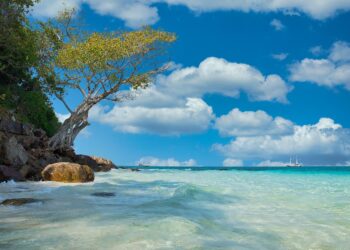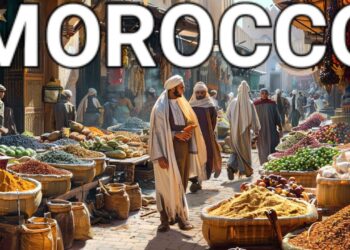Explore the diverse landscapes, historical sites, and vibrant culture of Tunisia with this comprehensive 7-day itinerary. Tunisia offers an enchanting blend of natural beauty and rich history, making it a perfect destination for travelers seeking unique experiences. From bustling medinas and ancient ruins to serene oases and stunning beaches, Tunisia has something for everyone.
Day 1: Arrival and Exploration of Tunis
Morning:
Arrival at Tunis-Carthage International Airport: As you land at Tunis-Carthage International Airport, you’ll feel the excitement of beginning your Tunisian adventure. After completing the necessary formalities, head to your hotel in the city. Check-in, unpack, and take a moment to freshen up after your journey. Tunis, the capital of Tunisia, is a bustling metropolis that seamlessly blends modernity with its rich historical heritage, setting the stage for your exploration.
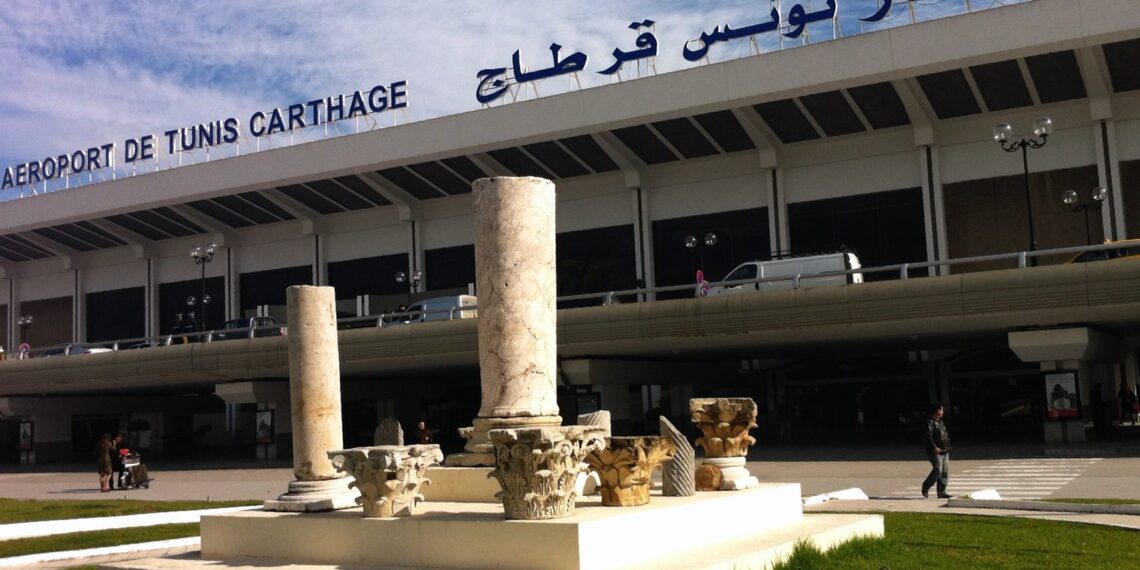
Bardo National Museum: Once you’re ready, start your exploration with a visit to the Bardo National Museum, one of Tunisia’s most important cultural institutions. Housed in a 15th-century palace, the museum boasts an extensive collection of Roman mosaics, considered among the richest in the world. As you walk through the halls, you’ll encounter breathtaking mosaics that depict scenes from mythology, daily life, and historical events. The museum also features artifacts from various periods of Tunisian history, including the Punic, Roman, Byzantine, and Islamic eras, offering a comprehensive overview of the country’s diverse heritage.
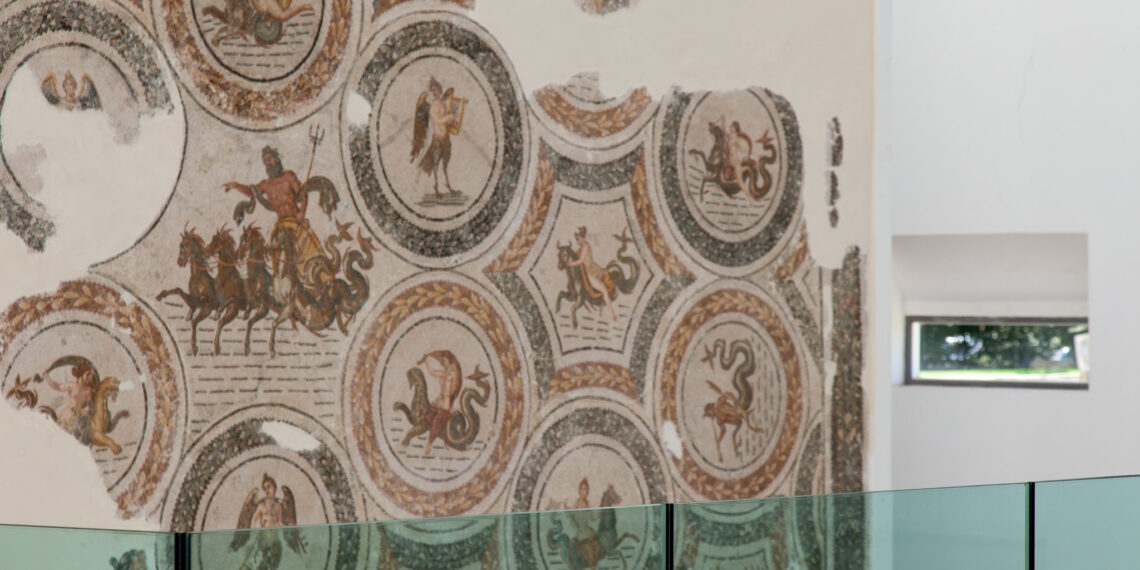
Afternoon:
Medina of Tunis: After a morning of immersion in Tunisia’s rich history, head to the heart of Tunis to explore the Medina, a UNESCO World Heritage site. The Medina, with its labyrinthine alleys and bustling atmosphere, provides a vivid contrast to the modern city surrounding it. As you wander through the narrow streets, you’ll encounter a myriad of historic mosques, such as the Zitouna Mosque, which dates back to the 8th century and is a significant center of Islamic learning.

Take your time to explore the vibrant souks, where you can find everything from traditional crafts and spices to jewelry and textiles. The lively atmosphere, the calls of vendors, and the scents of exotic spices create an unforgettable sensory experience. Don’t forget to bargain with the shopkeepers—it’s part of the shopping tradition here!
Evening:
Dinner in La Marsa: As the day winds down, make your way to La Marsa, a charming seaside suburb of Tunis. La Marsa is known for its relaxed ambiance, beautiful coastline, and excellent dining options. Choose a restaurant with a view of the Mediterranean Sea and enjoy a traditional Tunisian dinner. Sample local dishes such as brik (a type of pastry filled with egg and tuna), couscous, and fresh seafood, all seasoned with aromatic spices and herbs.

As you dine, take in the serene surroundings and reflect on the day’s adventures. The gentle sound of waves, the cool sea breeze, and the delicious flavors of Tunisian cuisine create a perfect ending to your first day in Tunisia. Get a good night’s rest, as the coming days promise more incredible experiences and discoveries.
Day 2: Discovering Carthage and Sidi Bou Said
Morning:
Carthage Ruins: Start your second day in Tunisia with a visit to the ancient city of Carthage, a UNESCO World Heritage site and one of the most historically significant locations in the Mediterranean. Carthage was once the powerful capital of the Carthaginian Empire and later a major city in the Roman Empire. Begin your exploration at the Antonine Baths, one of the largest Roman bath complexes in the world. As you walk through the ruins, imagine the grandeur of the baths in their heyday, where Romans once gathered to relax and socialize.
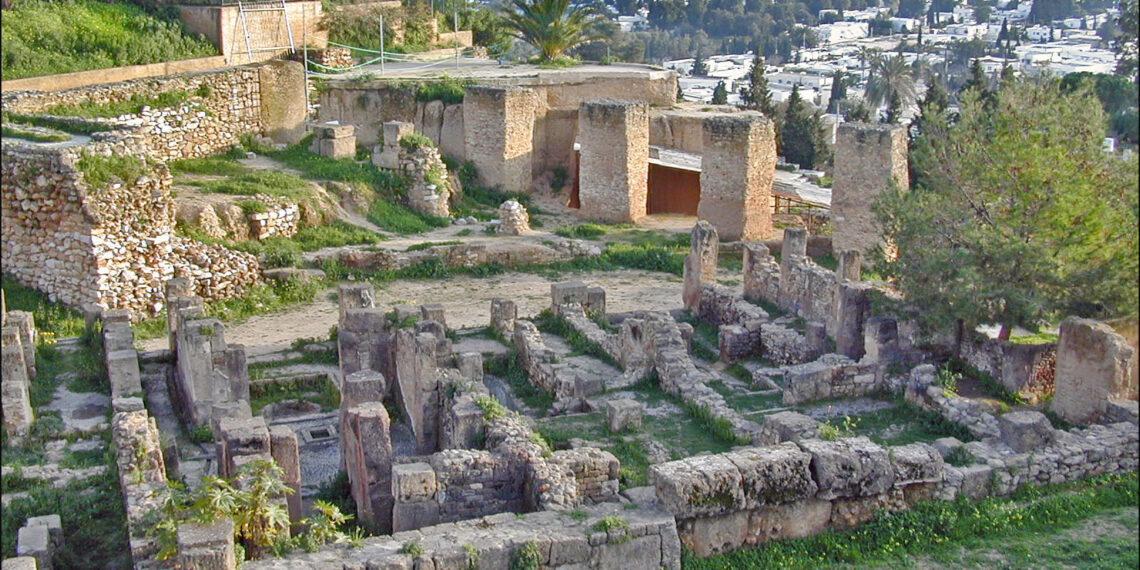
Next, visit the Roman Amphitheatre, where gladiators once fought and the local populace gathered for entertainment. The amphitheatre, though not as large as the one in El Djem, still evokes the grandeur of Roman architecture and the vibrant life of ancient Carthage.
Finally, make your way to Byrsa Hill, the heart of ancient Carthage. Here, you can explore the remains of Punic and Roman buildings and enjoy panoramic views of the surrounding area, including the Gulf of Tunis. The Carthage National Museum, located on the hill, offers a collection of artifacts that provide deeper insights into the city’s storied past.
Afternoon:
Sidi Bou Said: After immersing yourself in the ancient history of Carthage, head to the nearby village of Sidi Bou Said, a picturesque destination famed for its stunning blue and white architecture. As you arrive, you’ll be captivated by the charm of its narrow, cobblestone streets lined with whitewashed buildings adorned with blue doors and window frames.
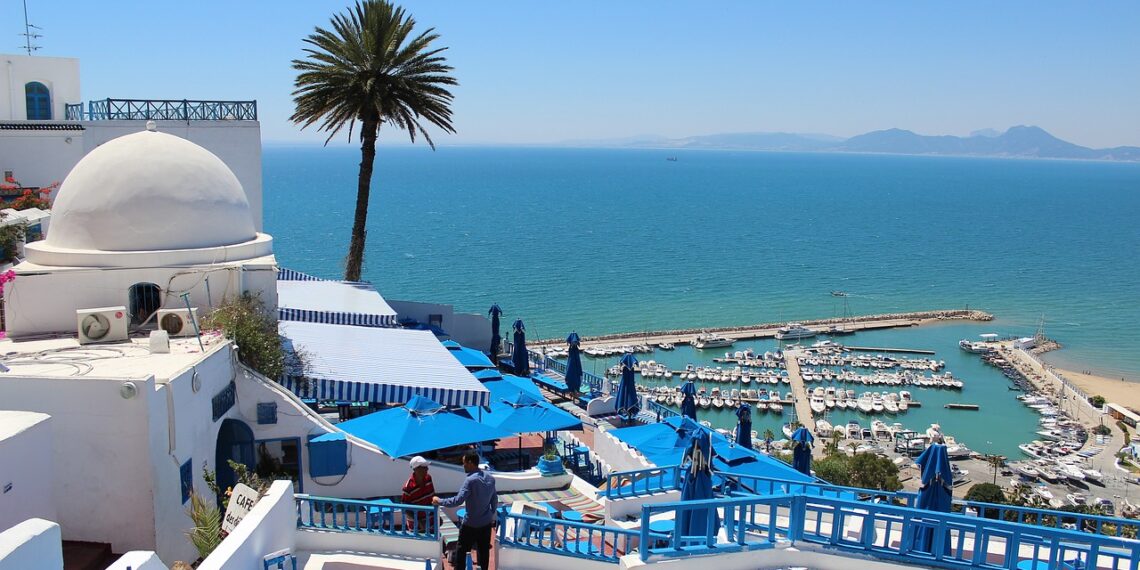
Take a leisurely stroll through the village, soaking in the serene atmosphere and artistic ambiance that has inspired countless artists and writers over the years. Visit the Dar el-Annabi Museum, a beautifully preserved traditional house that offers a glimpse into the daily life and customs of Tunisian families. The museum is filled with antique furniture, traditional clothing, and other cultural artifacts.
Don’t miss the opportunity to enjoy the panoramic views of the Mediterranean Sea from various vantage points around the village. The combination of azure sea, whitewashed buildings, and vibrant bougainvillaea creates a breathtaking scene that is perfect for photography.
Evening:
Dinner with a View: As evening approaches, choose a local restaurant in Sidi Bou Said that offers stunning views of the Mediterranean Sea. Many of the village’s restaurants are situated on terraces or rooftops, providing the perfect setting for a memorable dining experience. Enjoy a meal of fresh seafood or traditional Tunisian dishes, accompanied by the soothing sounds of the sea and the cool evening breeze.
As you savor your dinner, take a moment to reflect on the day’s explorations, from the ancient ruins of Carthage to the enchanting beauty of Sidi Bou Said. The serene ambiance and delicious cuisine create a perfect ending to your second day in Tunisia, leaving you refreshed and ready for the adventures that await in the days to come.
Day 3: Kairouan and El Djem
Morning:
Travel to Kairouan: Begin your day with a drive to Kairouan, known as the fourth holiest city in Islam and a UNESCO World Heritage site. The journey offers a glimpse of Tunisia’s diverse landscapes, from fertile plains to arid regions, giving you a deeper appreciation of the country’s natural beauty.
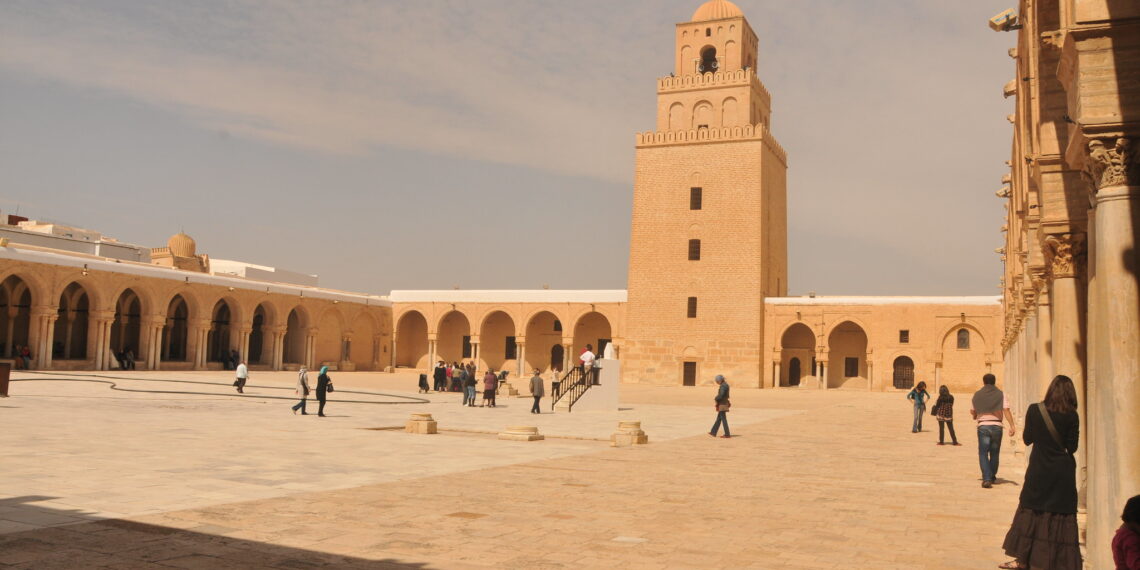
Great Mosque of Kairouan: Upon arrival in Kairouan, visit the Great Mosque of Kairouan, also known as the Mosque of Uqba. This stunning architectural marvel is one of the oldest and most significant mosques in the Islamic world. Its massive square minaret and sprawling courtyard are iconic features, and the interior is adorned with intricately designed columns and prayer halls. Take your time to explore the mosque and appreciate its historical and religious significance. The tranquility of this sacred place provides a serene start to your exploration of Kairouan.
Afternoon:
Aghlabid Basins and Medina: After visiting the mosque, head to the Aghlabid Basins, an impressive example of ancient engineering. These vast water reservoirs were built in the 9th century to supply water to the city and are a testament to the ingenuity of the Aghlabid dynasty. Stroll around the basins and learn about their historical importance and construction.
Next, venture into the Medina of Kairouan, where you can wander through the narrow, winding streets lined with traditional houses, shops, and markets. The medina is a vibrant hub of activity, offering a chance to experience the local culture and everyday life. Visit the souks to shop for unique souvenirs such as carpets, pottery, and traditional textiles. Don’t forget to try the local sweets, especially the famous Kairouan makroud, a date-filled pastry.
Drive to El Djem: In the late afternoon, drive to El Djem, a small town known for its spectacular Roman ruins. Upon arrival, check into your accommodation and take a moment to relax before continuing your exploration.
Evening:
El Djem Amphitheatre: As the sun begins to set, make your way to the El Djem Amphitheatre, one of the best-preserved Roman amphitheatres in the world. This impressive structure, capable of seating up to 35,000 spectators, is a testament to the grandeur of the Roman Empire. As you explore the amphitheatre, imagine the gladiatorial combats and other events that once took place here.

Climb to the upper tiers for breathtaking views of the surrounding area and enjoy the beautiful sunset as it casts a golden glow over the ancient stone walls. The quiet, majestic atmosphere of the amphitheatre at dusk provides a perfect end to your day.
After your visit, return to your accommodation in El Djem and enjoy a restful night, reflecting on the rich history and culture you have experienced so far on your Tunisian journey.
Day 4: Exploring Matmata and the Sahara Desert
Morning:
Travel to Matmata: Begin your day with a scenic drive to Matmata, a village renowned for its unique troglodyte dwellings. The journey through southern Tunisia’s rugged terrain offers captivating views of the changing landscapes, from rocky hills to expansive deserts.
Visit Troglodyte Homes: Upon arrival in Matmata, explore the famous underground homes, carved into the soft sandstone by the Berbers centuries ago. These subterranean houses, which remain cool in the scorching heat of the summer and warm during the cold winters, offer a fascinating glimpse into the traditional Berber way of life. Visit one of the local families who still live in these homes and learn about their customs and daily routines. The unique architecture and the warm hospitality of the Berber people make this an unforgettable experience.
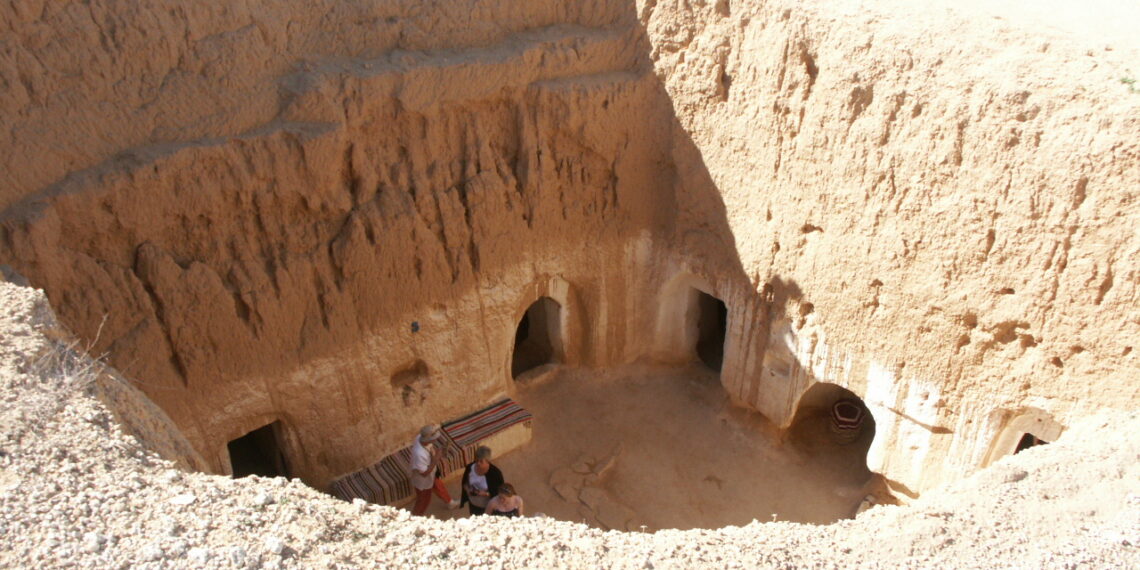
Afternoon:
Continue to Douz: After your exploration of Matmata, continue your journey to Douz, often referred to as the “Gateway to the Sahara.” This small town serves as a starting point for desert adventures and is known for its vast date palm groves and lively weekly market.
Sahara Desert Excursion: Once you arrive in Douz, prepare for an exciting camel trek into the Sahara Desert. Mount your camel and embark on a journey across the stunning sand dunes, feeling the rhythm of the desert under the clear blue sky. The golden dunes, stretching as far as the eye can see, create a mesmerizing landscape that is both tranquil and awe-inspiring. This camel trek provides a unique opportunity to experience the vastness and beauty of the Sahara firsthand.
Evening:
Desert Camp: As evening approaches, arrive at your desert camp nestled among the dunes. The camp offers a traditional Bedouin experience with comfortable tents and communal areas designed in authentic desert style. Enjoy a delicious traditional Bedouin dinner under the stars, featuring dishes such as couscous, grilled meats, and fresh salads, all seasoned with local spices.
After dinner, relax by the campfire and gaze at the clear night sky, free from light pollution. The Sahara offers one of the best stargazing experiences in the world, with the Milky Way and countless stars visible in all their glory. Listen to the stories and songs of the Bedouin guides, and immerse yourself in the serene and magical atmosphere of the desert night.
Spend the night in your desert tent, falling asleep to the gentle sounds of the desert, and wake up refreshed and ready for another day of exploration in Tunisia.
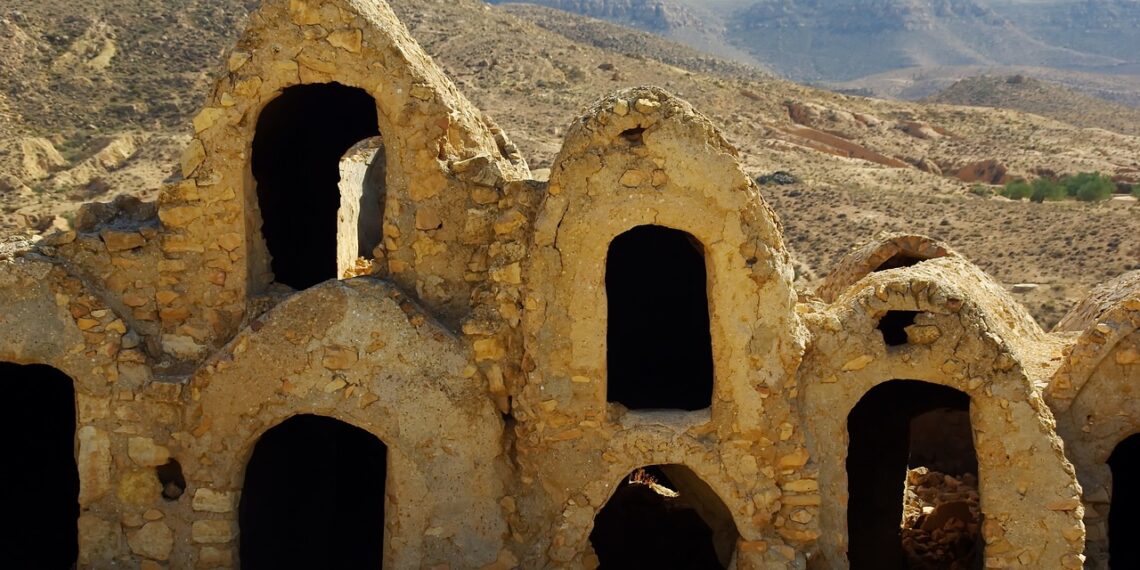
Day 5: Discovering Tozeur and the Chott el Jerid Salt Flats
Morning:
Travel to Tozeur: Begin your day with a drive to the oasis town of Tozeur. This journey takes you deeper into southern Tunisia, where the landscape transitions from the sandy dunes of the Sahara to the lush greenery of one of the largest oases in the country. Tozeur is renowned for its extensive palm groves and unique desert architecture.

Chott el Jerid: On your way to Tozeur, make a stop at Chott el Jerid, the largest salt flat in the Sahara Desert. This vast, shimmering expanse of salt is famous for its otherworldly landscapes and mesmerizing mirages. Depending on the time of year and recent rainfall, you might see vivid colors ranging from stark white to deep pink, caused by the crystallization of salt. Take some time to walk around, take photos, and marvel at the surreal beauty of this natural wonder.
Afternoon:
Explore Tozeur: Upon arriving in Tozeur, start your exploration with a visit to the medina. Wander through its narrow streets and admire the distinctive brickwork and decorative patterns that characterize the local architecture. The medina is a vibrant area filled with shops selling local crafts, dates, and other regional products.
Next, visit the Dar Cheraït Museum, a charming museum that offers insights into Tunisian culture and history. The museum is housed in a beautiful building that itself is a piece of art, with its intricate design and traditional décor. Inside, you’ll find a fascinating collection of artifacts, including traditional costumes, jewelry, and household items that depict the lifestyle of different regions of Tunisia.
After the museum, take a leisurely stroll through Tozeur’s famous palm groves, which cover over 1,000 hectares and contain more than 400,000 date palms. The lush greenery provides a refreshing contrast to the surrounding desert, and you can relax in the shade, sample fresh dates, and enjoy the serene environment.
Evening:
Traditional Dinner: As evening falls, head to a local restaurant in Tozeur to enjoy a traditional Tunisian dinner. The town is known for its rich culinary heritage, and you’ll have the opportunity to savor dishes like brik (a pastry filled with egg and tuna), couscous with lamb or fish, and a variety of salads and side dishes made with fresh, local ingredients.
End your day with a relaxing walk through the streets of Tozeur, soaking in the evening atmosphere and the warmth of Tunisian hospitality. Reflect on the day’s adventures as you prepare for another exciting day of exploration.
Day 6: Exploring Mountain Oases
Morning:
Mountain Oasis Tour: Begin your day with a tour of the mountain oases near Tozeur, visiting the picturesque villages of Chebika, Tamerza, and Mides. These oases are nestled in the rugged Atlas Mountains and offer breathtaking views of lush palm groves, cascading waterfalls, and dramatic canyons.
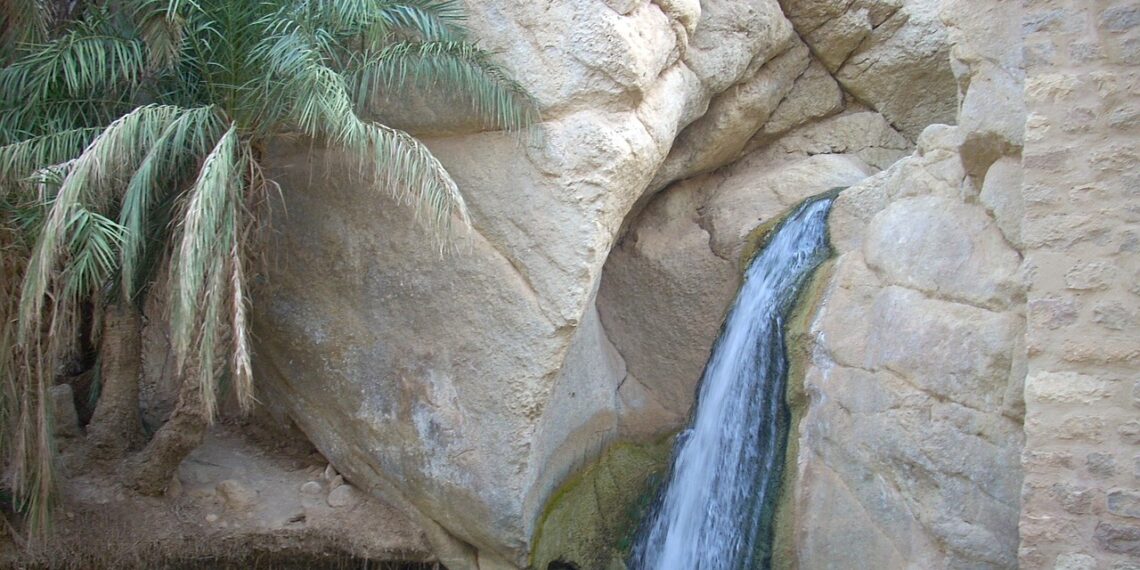
- Chebika: Start your tour with Chebika, often referred to as the “Palm Paradise.” This oasis is known for its lush greenery, date palms, and picturesque setting against the backdrop of rugged mountains. Take a stroll through the oasis, admire the traditional mud-brick houses, and relax by the natural springs.
- Tamerza: Next, head to Tamerza, the largest mountain oasis in Tunisia. Explore the village and marvel at the impressive Tamerza Waterfall, which cascades down a cliff into a refreshing pool below. The waterfall and surrounding canyon offer stunning photo opportunities and a chance to immerse yourself in nature’s beauty.
- Mides: Conclude your oasis tour with a visit to Mides, known for its breathtaking canyon views and traditional Berber architecture. Wander through the village, interact with the friendly locals, and enjoy panoramic vistas of the rocky landscape.
Afternoon:
Relax and Explore: After a morning of exploring the mountain oases, return to Tozeur for some relaxation or further exploration. You might want to revisit the medina, visit local shops to purchase souvenirs, or simply unwind at a café and enjoy the laid-back atmosphere of this charming oasis town.
Evening:
Dinner in Tozeur: In the evening, indulge in another delicious Tunisian meal at a local restaurant in Tozeur. Choose from a variety of traditional dishes that highlight the region’s culinary specialties, such as couscous with lamb, grilled meats, flavorful tagines, and aromatic teas.
As you dine, reflect on the beauty of Tunisia’s landscapes, the warmth of its people, and the rich cultural heritage you’ve experienced throughout your journey. Enjoy the hospitality and ambiance of Tozeur, knowing that you’ve made unforgettable memories during your time in this enchanting corner of North Africa.
Day 7: Exploring Djerba Island
Morning:
Travel to Djerba: Begin your day with a journey to Djerba Island, known for its beautiful beaches, vibrant culture, and rich history. Djerba, often referred to as the “Island of Dreams,” offers a perfect blend of relaxation and exploration.

Houmt Souk: Upon arrival in Djerba, head to the capital city, Houmt Souk. This charming town is known for its bustling markets, historic architecture, and vibrant atmosphere. Start your exploration by visiting the local markets, where you can browse for handicrafts, textiles, spices, and souvenirs. Don’t miss the opportunity to visit Borj El Kebir fortress, an ancient fortification that offers panoramic views of the town and surrounding areas.
Afternoon:
Ghriba Synagogue: After exploring Houmt Souk, visit the Ghriba Synagogue, one of the oldest Jewish synagogues in the world. This historic site holds great significance for the Jewish community and is known for its beautiful architecture and spiritual atmosphere. Take a moment to appreciate the synagogue’s intricate details and learn about its history and cultural importance.
Beach Time: In the afternoon, unwind and relax on one of Djerba’s stunning beaches. With its crystal-clear waters, soft golden sands, and gentle sea breezes, Djerba’s beaches provide the perfect setting for sunbathing, swimming, or simply enjoying the tranquil ambiance. Whether you prefer a secluded spot or a lively beach club, Djerba offers a variety of options to suit your preferences.

Evening:
Farewell Dinner: As the day draws to a close, enjoy a final dinner on the island, savoring fresh seafood and traditional Tunisian dishes. Choose a restaurant with a view of the sea or in the heart of Houmt Souk to enjoy a memorable dining experience. Indulge in local specialties such as grilled fish, seafood couscous, spicy harissa, and delicious pastries. Share stories and memories from your journey through Tunisia, soaking in the warm hospitality and cultural richness that Djerba has to offer.
After dinner, take a leisurely stroll through Houmt Souk’s lively streets, perhaps picking up some last-minute souvenirs or simply soaking in the vibrant atmosphere of this charming island town. Reflect on your adventures in Tunisia, from ancient ruins to desert landscapes to coastal delights, and cherish the moments you’ve experienced on Djerba Island.
Tips for Your Trip
Best Time to Visit: The best time to visit Tunisia is during the spring (March to May) and autumn (September to November) when the weather is pleasant, with moderate temperatures ideal for exploring the diverse landscapes and cultural sites across the country.
Local Cuisine: When in Tunisia, indulge in local delicacies such as couscous, brik (a savory pastry filled with egg and tuna), and harissa (a spicy chili paste). These dishes are staples of Tunisian cuisine and offer a delightful taste of the country’s culinary heritage.

Cultural Etiquette: Respect local customs and traditions, particularly when visiting religious sites or interacting with locals. Dress modestly, especially in mosques and other religious places. It’s also courteous to greet people with “As-salamu alaykum” (peace be upon you) and to accept invitations for tea or coffee as a sign of hospitality.
Enjoy your unforgettable journey through the heart of Tunisia!
